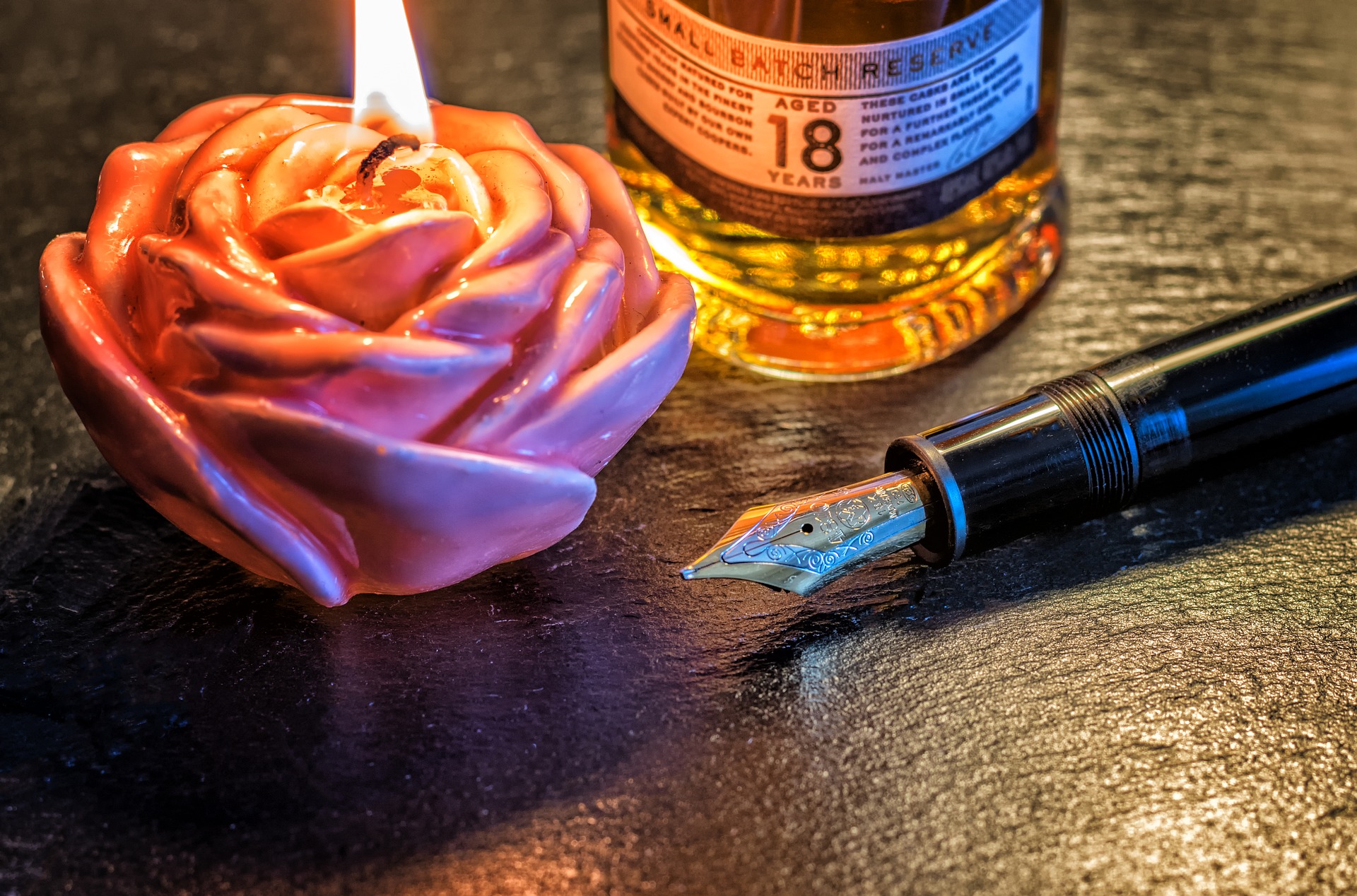
I can’t lie. I’ve been a bit silent these past weeks and months. As the whisky world is buzzing with more and more distilleries, more and more releases and more and more messaging put out there, there is less and less “for me” out there that truly excites me. In the course of this year, I have found less and less to buy and spending will have decreased considerably for the second year running. The more hyped up the whisky world gets, the farther it distances itself from me – or the other way round. With the closure of the Cadenhead’s shop in Salzburg at the end of the year, I’m losing my main source for affordable, interesting bottles, which “doesn’t help” either.
Anyway, this should only serve as an introduction. No, this will not be a blog post about whisky prices, I’ve written about that before. Today I want to talk about whisky, luxury and aspiration due to two things that happened just today: A discussion about whisky magazines and their content/target group in a Facebook group and listening to a podcast about luxury. That made things click for me and prompted me to write a few lines…
Let’s take a step back. We all probably started with a cheap blend or a cheap bourbon, possibly mixed into a drink. Initially, stepping up in the whisky game feels like extreme progress. That first – love it or hate it – sip of a heavily peated whisky, that first dram of a heavily sherried dram. It’s a world of exploration. Moving from 10€ a bottle to 30€ a bottle is expensive, yet in most cases very rewarding. We get hooked, looking for more, looking for rare, attending events, tastings, educating our noses and palates.
There comes a point when that 10yo bottle of Laphroaig, which was a beast when we took our first sip, seems watery to us a few years in when we’ve got the entire range of Octomores on the shelf and it seems natural. The higher we climb the whisky ladder, the higher the expectations get – and more and more often, we are and get disappointed – the law of diminishing return kicks in. The more (money) you pour in, the less the increase in quality seems to be. We aren’t happy with what we’ve got – even though it is leagues above where we started. We do not look back at where we came from, we look ahead – at the next big thing, at the next decade in the age of the whisky stated and still, there is never enough. We live under the illusion, that if we buy this next whisky up in the range, it will be better and we will be satisfied – but we aren’t. As soon as that bottle sits there at home – if it even gets opened at all, we start looking at the next one, and the next, and the next.
The whisky companies have realized that and they are exploiting it to extents unimaginable just a mere few years ago. You can’t really fault them in a climate where money seems to be neverending and whisky is in demand. Never before have we seen so extravagantly packaged whiskies, never before have we seen myriads of collectable series, each and everyone tempting us to get them all, to aspire to, making what we have in our glasses feel mediocre compared to what’s still out there. The independent bottler Gordon & MacPhail’s has even appointed a “Director of Prestige” for the ultra-high-end luxury markets – even more proof of where it is all headed.
There seems to be no way of escape than going up, up, up – or is there?
What I’ve become to realize is, I’m incredibly lucky to have tasted the amount of whiskies I have been able to, like just recently a vertical of Highland Park up to the 40yo, which is a “dream dram” many wish to be able to afford a single measure of one day. When you’ve reached the top levels, the summit of the mountain, that’s when realization strikes you: This is the top, this is the end, this is where the aspiration game ends. The biggest disappointments in whisky for me have not been the “meh” cheap drams, it was the outrageously expensive “meh” drams – and let me tell you, there’s a lot of them out there. The main thing you need to realize is: With whisky, you mainly pay for rarity and only to a lesser extent for quality. Whisky, even single malt, is cheap to produce and within limits a 70.000€ bottle of whisky cost about the same to make than a 50€ bottle of whisky. And thus the 50€ bottle can be a much better dram. You pay for rarity, you pay for image, you pay for bragging rights, you pay for exclusivity, you pay for luxury. You do not pay for quality, at least not nearly as much as for all these other things.
That’s what I’ve realized over the course of the past two years, that’s where the journey led me. I no longer care if I can get that limited edition bottle or not or if I get to taste the latest big/hot thing or not. These days, if I happen upon a whisky that’s excellent for the asking price, I will gladly pick it up – and that can also be a more expensive whisky, if price and quality are in sync. If not, then I won’t pick it up. I’m taking it easy and slow these days – at my pace. I’ve got nothing to prove to anyone.
I hope you too can end the aspiration game, finding that peace of mind and replacing the feeling of restlessness and worry about the “next bottle” with a feeling of relaxation and enjoyment, a perfectly fine dram in your hand. After all, relaxation and enjoyment is what it is all about and it stems from just a few grains of malted barley, water and yeast. Three very simple ingredients which are out there in abundance!



Hi there,
to me whisky has become boring over the last two years. Perhaps since even longer. Not only whisky in itself only but all the rest of its ecosystem around it.
The golden years were over about 2011/12 when the scale of what was in the market and at affordable prices was begining to diminish. The 20+yo bottlings became not scarcer but when they were on offer their prices had climbed and still do the fastest with every new release – a strategy the whisky industry calls premiumisation. A cul de sac strategy that has much to do with the state whisk(e)y is in. Not a certain category of whisky but almost all of it.
The first old 30-40yo grains were about 60.- € and look what they are now. Scarcity of some whiskies is not the only reason for climbing prices. There is a much bigger element of „let’s see if we can get away with it“ – and unfortunately they do get away with premiumisation as there are more whisky buyers with money out there than whisky buyers with brains.
All in all new bottlings are far less exiting than they were in years gone by and there are not as many as there were and either they are overpriced NAS like Ardbeg An Oa or any other new hyped whisky or they are super luxury crystal decantered stupidity which my purse prevents my to take an interest in. And more tan 100.- € for 18-20yo whiskies is just too much.
The money you have to pay for decent whisky itself is not much more than it used to be. But on every bottle there is a markup for uneccessary sometimes outright stupid marketing storytelling fancy packaging and „let’s see how far we can go“ today.
The forums I read and post in are slowly drowning in boredom many a cherished whisky blogger has given up and the whisky world slowly but surely is becoming more and more silent. The enthusiastic interest in whisky is ebbing the excitement is gone and the super premium market self-evoked by the whisky industry is only kept up by the above mentioned people with more money than brains and as I see it the broad not to say huge base on which whisky and its boom since the early 2000s has rested has been eroded by greed and shortsightedness.
There are exceptions to the rule whisky movers like Signatory or Glenfarclas which – most of the time – seem to have retained a realistic view on how to sell whisky. But these exceptions are few.
Meanwhile some seem to seek their future in emerging markets or in whisky as a hip and fancy cocktail ingredient. That will bring money but the magic will be lost.
In short I can well understand you Klaus.
Greetings
kallaskander
Thanks a lot for your reply, kallaskander, which comes very well-received! I can understand and support all your arguments. One other aspect of the price hikes are also the auctions. While I do like whisky auctions to find the odd interesting (but not overhyped or newly released) old bottle, distilleries and their owners now factor in a good part of the auction takings. The way they think seems to be “if people are going to flip the bottles, we better get a decent share in the first place as well”. Who is right? Who is wrong? Hard to say.
Personally, I’m voting with my wallet and more people should do that. The raw spirit + wood + alcohol taxes on a bottle is in the single digits, add a few more pounds for storage space if it goes into decades, but that’s that.
I have seen price lists of brokers. I have had prices for casks whispered in my ear. I have calculated and have been told of how high markups are in some cases, in some cases it’s absolutely unbelievable. I think the worst case scenario I calculated was a private bottling of a Springbank cask where every bottle sold meant roughly a 100€ profit for the seller. For a bottle that sold for under 200€ (I believe). That’s where the love for whisky stops and greed starts. But, again, who’s to blame? If the market allows for such excesses I guess you’d be stupid not to try…
Anyway, I’m typing all that doing what I do quite a few days of the week these days – not sipping a whisky but enjoying a fine loose-leaf tea… I’m not leaving the whisky world, it’s still my favourite drink, but my passion does have cooled down slightly as it is and has been the case for quite a lot of people, as you pointed out.
The industry “can get away with it” because of the internet that influences the way people buy and collect information about one whisky.
Because firstly people think that “collecting” whisky is normal (well, it has become the normality but it’s a new phenomenon possible thanks to the internet : access to information, access to new whiskies, but it’s not something “normal” : it leads to speculation), secondly because it’s easy to buy anything and finally because people can easily read and just have to follow X or Y on twitter or a blog to know what to buy (=everyone wants the same bottle).
When your industry put on the market every month limited editions of hundreds of bottles, it’s only a way to cut the cake in many small parts in order to sell these parts at a premium price. It’s a scam for pushing you to collect.
I admit, I am new to whisky, I like the product inside the bottle but already hate its world, from its industry (I come from wine, which has lots of bad sides but is family oriented and is much much more diversified, dynamic and human) to the sheepish side of some of its consumers and I can’t stand the “collecting” thing which equals for me the whisky amateurs digging their own grave. I don’t feel like fully entering a world that asks me emotional involvement in an industrial product, in an industry which makes billions of pounds… There is a big scam here.
Anyway, I am interested, that’s why I am here :-), your blog seems informative and… human, which is great. I am going to visit it a bit more, I am already enjoying what I read from you. Thank you for sharing your thoughts and experience.
Thank you very much for your comment!
I don’t think there’s anything wrong with collecting whisky per se – if it weren’t for collectors we couldn’t taste yesteryear’s drams today. At the same time I agree – historically whisky collecting has never been the way it is today where we are bombarded with myriads of releases every year, many of them primarily aimed at being “collectable”.
At the same time, there is still a good number of “honest” bottlings out there that are worth picking up and companies worth supporting. I hope you’ll find your way into the whisky world and don’t get too distracted by all the glamour and crystal decanters – good things often come in very unassuming packaging! Thanks for reading my humble blog and all the best!
Thank you for your answer and for welcoming me in the whisky world. Don’t worry, I know that whisky is like the wine world : the more shiny = the less interesting.
My hope is that more and more new distilleries open everywhere in the world, so that the corporate industry loses of its power and that the consumer has more choice and quality is pulled upwards (and not downwards with NAS like today).
New distilleries… a double-edged sword! There ARE so many popping up all over the world. Making great whisky is a time- and especially capital-intensive business. In my opinion the current rate of new projects is unsustainable and quite a number of them might not be around when the next downturn comes around. Single malt is just a very, very low percentage of the overall whisky market, the vast majority is still cheap-ish blended whisky. Will small, single-malt-focused distilleries have the power to survive when the next “hip” thing to buy and collect switches to Rum, Mezcal or Cognac?
Also, many of the new distilleries – at least here in Austria – are coming from a fruit distilling background, using equipment for distilling just that – fruits. While some of the whiskies might be okay, most of them sell to “ordinary folk” who aren’t really into whisky, but usually buy fruit distillates and just pick up some whisky because of the novelty factor and because it’s currently “en vogue”.
I don’t have a crystal ball and I wish everybody the best of luck…